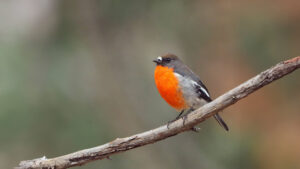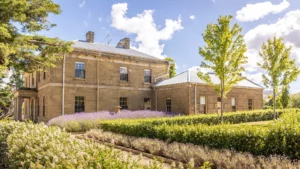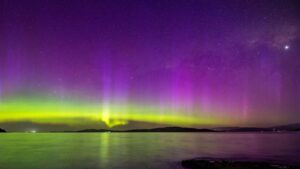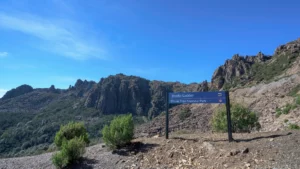Isn’t she magic?! The dancing lady of the night, aka the Aurora Australis, is a phenomenon we are lucky to witness here in Tasmania. The ethereal green and purple glow and shooting beams of light are so enchanting! Next time she comes calling, head out to meet her along the Heritage Highway and capture some spectacular photos. We’ve put together some tips to help you on your way.
What is an Aurora?
First things first: what actually is an Aurora? We know it looks pretty, but this art is based in science. First up, the sun has a bit of a hiccup and coughs plasma out into space in what’s known as a coronal mass ejection (CME). The plasma ejected in a CME travels 150 million kilometres (those are some epic frequent flyer miles), then crashes into Earth’s magnetic field, causing a geomagnetic storm that produces the bursts of light we see during auroral displays.
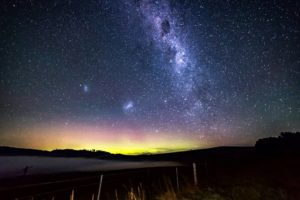
Image (Jericho): @mattdavis_insta/Instagram
When does it occur?
Something this special doesn’t run on a schedule, although activity levels do vary depending on where the sun’s at in its 11 year cycle. While there’s no way to predict in advance exactly when an Aurora will occur, there are a few signs to watch out for. Join the Aurora Australis Tasmania Facebook group and their Aurora Australis Alert Now Group to stay in the loop.
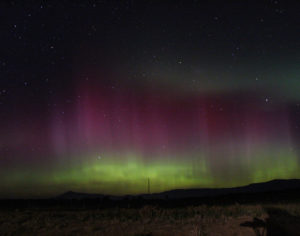
Image (Cressy): @ash_wildlife/Instagram
How can I see it?
Once the alert’s gone out, grab your camera, get away from light pollution, and look south towards the horizon (hopefully it won’t be cloudy and the moonlight won’t be too bright). We are very lucky in Tasmania, as the further south you are, the more likely you are to be able to see the Southern Lights.
To the human eye, an Aurora will appear mostly as white light, with some very faint colour. Your camera should be able to pick up the vibrant colours (usually green and purple), as well as the dancing beams of light. Ideally, use a digital SLR and tripod and play with some long exposure shots.
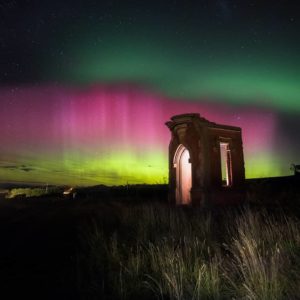
Image (Somercotes): @tassie_heights/Instagram
Where are some good spots?
All the towns along the Heritage Highway have good vantage points, away from light pollution (try Jericho and Cressy). Historical points of interest can make top shots – we’ve seen some beautiful snaps of the Aurora Australis glowing brightly above the historic Ross Bridge, with both reflected in the water.
Spots on the region’s rivers and lakes, with their mirror reflections, also make stunning shots. Evandale, in the Northern Midlands, is a popular spot with photographers, who create magical photos with tree silhouettes and colourful reflections in the South Esk River. In the Southern Midlands, Lake Dulverton at Oatlands is an incredible place to set up your camera.
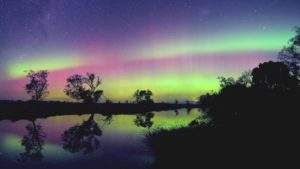
Image (Evandale): @micahlambeaux/Instagram
We love it when you share your adventures with us!
Tag @MidlandsTasmania and use @MidlandsTasmania or #HeritageHighway and we’ll share our favourite photos on @MidlandsTasmania, Facebook, and in our Blog.
Related posts:
Autumn Enchantment: 7 Spots to Feel the Season’s Magic
Fly Fishing and Flying Saucers: 5 Things to do at Cressy
Step Back in Time at these Five Colonial Estates
A Gothic Fairytale: 15 Colonial Churches in the Midlands
Words:
Isabel Galloway

